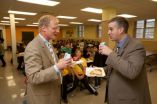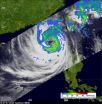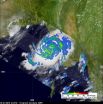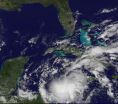(Press-News.org) Saratoga Springs, NY: Don't ban it, move it. This is one conclusion of a new Cornell University study. In one set of schools, sales of fruit increased by 100% when it was moved to a colorful bowl. Salad bar sales tripled when the cart was placed in front of cash registers.
These findings presented today at the School Nutrition Association's New York conference, underscore the easiest way to lunchroom choices is to make an apple more convenient, cool, and visible than a cookie. The conclusion of six different studies with over 11,000 middle and high school studies show that psychology and economics might be better outlawing tasty food.
"It's not nutrition until someone eats it. You need to have foods that kids will eat, or they won't eat – or they'll eat worse" said Chris Wallace, Food Service Director for the Corning, New York School District.
We're focusing on giving Food Service Directors "low-cost/no cost" changes they can make immediately, said Brian Wansink, Co-Director of the Cornell Center of Behavioral Economics in Child Nutrition Programs (BEN). During his research presentation, he described other studies which showed:
Decreasing the size of bowls from 18 ounces to 14 ounces reduced the size of the average cereal serving at breakfast by 24 percent.
Creating a speedy "healthy express" checkout line for students not buying calorie-dense foods like desserts and chips, doubled the sales of healthy sandwiches.
Moving the chocolate milk behind the plain milk led students to buy more plain milk.
Keeping ice cream in a freezer with a closed opaque top significantly reduced the amount of ice cream taken.
When cafeteria workers asked each child, "Do you want a salad?" salad sales increased by a third.
INFORMATION:
The Cornell Center (BEN.Cornell.edu) is funded by the USDA and will be awarding research grants to determine additional "low-cost/no cost" changes that schools can make to improve what kids eat and can improve participation in the school lunch program.
Making school lunchrooms smarter
Behavioral economics and school nutrition
2010-10-23
ELSE PRESS RELEASES FROM THIS DATE:
Green Carbon Center takes all-inclusive view of energy
2010-10-23
Rice University has created a Green Carbon Center to bring the benefits offered by oil, gas, coal, wind, solar, geothermal, biomass and other energy sources together in a way that will not only help ensure the world's energy future but also provide a means to recycle carbon dioxide into useful products.
Whether or not one believes in anthropogenic climate change, the fact is humans are throwing away a potentially valuable resource with every ton of carbon dioxide released into the atmosphere, said James Tour, Rice's T.T. and W.F. Chao Chair in Chemistry as well as a professor ...
Mount Sinai researchers discover origin of immune cells in the brain
2010-10-23
Mount Sinai researchers have discovered that microglia, the immune cells that reside in the brain, have a unique origin and are formed shortly after conception. It was previously thought that microglia originated at the same time as macrophages, which are other immune cells that are thought to develop at birth. This groundbreaking discovery has the potential to lead to future treatments of degenerative brain diseases such as Alzheimer's and autoimmune diseases such as multiple sclerosis. The study is published online October 21 in Science Express.
Microglia are thought ...
UC San Diego researchers identify factor boosting leukemia's aggressiveness
2010-10-23
Chronic lymphocytic leukemia (CLL) cells survive and thrive not just by their own innate wiles, but by also acquiring aid and support from host cells in their surrounding environment. In a paper published online this week in The Proceedings of National Academy of Sciences, an international team of researchers led by cancer specialists at the University of California San Diego School of Medicine and the Moores UCSD Cancer Center identify a particular relationship that can promote notably aggressive leukemias and lymphomas.
"The microenvironment is the term used to describe ...
Practice-changing studies on how oncologists treat cancer to be presented at ASTRO Annual Meeting
2010-10-23
The following are highlights of new cancer research being released at the American Society for Radiation Oncology's (ASTRO) 52nd Annual Meeting to be held October 31 through November 4, 2010, in San Diego.
For full copies of the abstracts and press releases, contact Nicole Napoli at nicolen@astro.org or Beth Bukata at bethb@astro.org. Studies are embargoed until October 25, 2010, at 1:00 p.m. Eastern time.
Adding radiation to hormone therapy for prostate cancer treatment will increase survival chances
Prostate cancer patients who are treated with a combination of hormone ...
UH engineering professors featured in consecutive issues of Science
2010-10-23
HOUSTON, Oct. 22, 2010 – Researchers can spend entire careers producing outstanding work but still not see their efforts featured in the pages of Science, one of the world's most prestigious scientific journals. That won't be the case, though, for two junior faculty members in engineering at the University of Houston (UH).
Jacinta Conrad and Jeff Rimer, both assistant professors in Cullen College of Engineering's department of chemical and biomolecular engineering, had papers featured in consecutive issues of Science this month.
"Jacinta and Jeff are both extremely ...
From obscurity to prime time: Viral political videos can spring from non-political sites
2010-10-23
What's the mechanism that makes a political video go viral? What causes a video clip to spread from a few people to millions, sometimes in a matter of hours? Is it a top-down process led by elite gatekeepers or bottoms up, driven by people at the grass roots? And how do blogs affect the life cycle of a viral video?
Common wisdom might suggest that a posse of political blogs triggers virality, but research from the University of Washington indicates it often springs from just two elite blogs followed by top general interest outlets that aren't considered political.
A ...
Falling in love 'more scientific than you think,' according to Syracuse University professor
2010-10-23
A new meta-analysis study, "The Neuroimaging of Love," conducted by Syracuse University Professor Stephanie Ortigue, reveals that falling in love can elicit not only the same euphoric feeling as using cocaine, but also affects intellectual areas of the brain. Researchers also found falling in love only takes about a fifth of a second.
Ortigue is an assistant professor of psychology and an adjunct assistant professor of neurology, both in The College of Arts and Sciences at Syracuse University.
Results from Ortigue's team revealed when a person falls in love, 12 areas ...
NASA satellites see Typhoon Megi poised for southeastern China landfall
2010-10-23
Typhoon Megi has run into winds that are weakening the storm, but it is forecast to make landfall in southeastern China late at night (EDT) on Oct. 22 (11 a.m. local time Hong Kong, Oct. 23) as a Category One Typhoon. NASA satellites have been monitoring the storm's rainfall, changing cloud cover, and changing eye as it weakens.
The Tropical Rainfall Measuring Mission (TRMM) satellite traveled directly above Megi on October 21 at 1401 UTC (10:01 a.m. EDT) when wind speeds were estimated to be about 100 knots (~115 mph). Megi caused at least 27 deaths in the Philippines ...
Category 4 Cyclone Giri hits Burma, NASA satellite sees heavy rainfall
2010-10-23
Tropical Storm 04B grew quickly into powerful Cyclone Giri and was making landfall in Burma today as a powerful Category Four Cyclone on the Saffir-Simpson scale. NASA's TRMM satellite noticed that the storm contained some heavy rainfall in addition to the powerful winds.
Giri is the second tropical cyclone of 2010 to form in the Bay of Bengal and was seen by the Tropical Rainfall Measuring Mission (TRMM) satellite. Cyclone Giri was seen clearly by the TRMM satellite twice on Oct. 21. The first good view was at 1534 UTC (11:34 a.m. EDT) when TRMM data showed a very well ...
Tropical Storm Richard born in the Caribbean, GOES-13, TRMM watching
2010-10-23
The GOES-13 satellite is watching Tropical Storm Richard work its way through the western Caribbean, and residents of eastern Honduras, Guatemala, Belize and Mexico's Yucatan Peninsula are bracing for its impacts as it is forecast to strengthen to hurricane status this weekend. Richard is going to be a big rainmaker for those countries.
The Geostationary Operational Environmental Satellite called GOES-13 captured a visible image of Tropical Storm Richard at 1732 UTC (1:32 p.m. EDT) on Oct. 22. GOES satellites are managed by NOAA. NASA's GOES Project at NASA's Goddard ...
LAST 30 PRESS RELEASES:
Making lighter work of calculating fluid and heat flow
Normalizing blood sugar can halve heart attack risk
Lowering blood sugar cuts heart attack risk in people with prediabetes
Study links genetic variants to risk of blinding eye disease in premature infants
Non-opioid ‘pain sponge’ therapy halts cartilage degeneration and relieves chronic pain
AI can pick up cultural values by mimicking how kids learn
China’s ecological redlines offer fast track to 30 x 30 global conservation goal
Invisible indoor threats: emerging household contaminants and their growing risks to human health
Adding antibody treatment to chemo boosts outcomes for children with rare cancer
Germline pathogenic variants among women without a history of breast cancer
Tanning beds triple melanoma risk, potentially causing broad DNA damage
Unique bond identified as key to viral infection speed
Indoor tanning makes youthful skin much older on a genetic level
Mouse model sheds new light on the causes and potential solutions to human GI problems linked to muscular dystrophy
The Journal of Nuclear Medicine ahead-of-print tip sheet: December 12, 2025
Smarter tools for peering into the microscopic world
Applications open for funding to conduct research in the Kinsey Institute archives
Global measure underestimates the severity of food insecurity
Child survivors of critical illness are missing out on timely follow up care
Risk-based vs annual breast cancer screening / the WISDOM randomized clinical trial
University of Toronto launches Electric Vehicle Innovation Ontario to accelerate advanced EV technologies and build Canada’s innovation advantage
Early relapse predicts poor outcomes in aggressive blood cancer
American College of Lifestyle Medicine applauds two CMS models aligned with lifestyle medicine practice and reimbursement
Clinical trial finds cannabis use not a barrier to quitting nicotine vaping
Supplemental nutrition assistance program policies and food insecurity
Switching immune cells to “night mode” could limit damage after a heart attack, study suggests
URI-based Global RIghts Project report spotlights continued troubling trends in worldwide inhumane treatment
Neutrophils are less aggressive at night, explaining why nighttime heart attacks cause less damage than daytime events
Menopausal hormone therapy may not pose breast cancer risk for women with BRCA mutations
Mobile health tool may improve quality of life for adolescent and young adult breast cancer survivors
[Press-News.org] Making school lunchrooms smarterBehavioral economics and school nutrition




